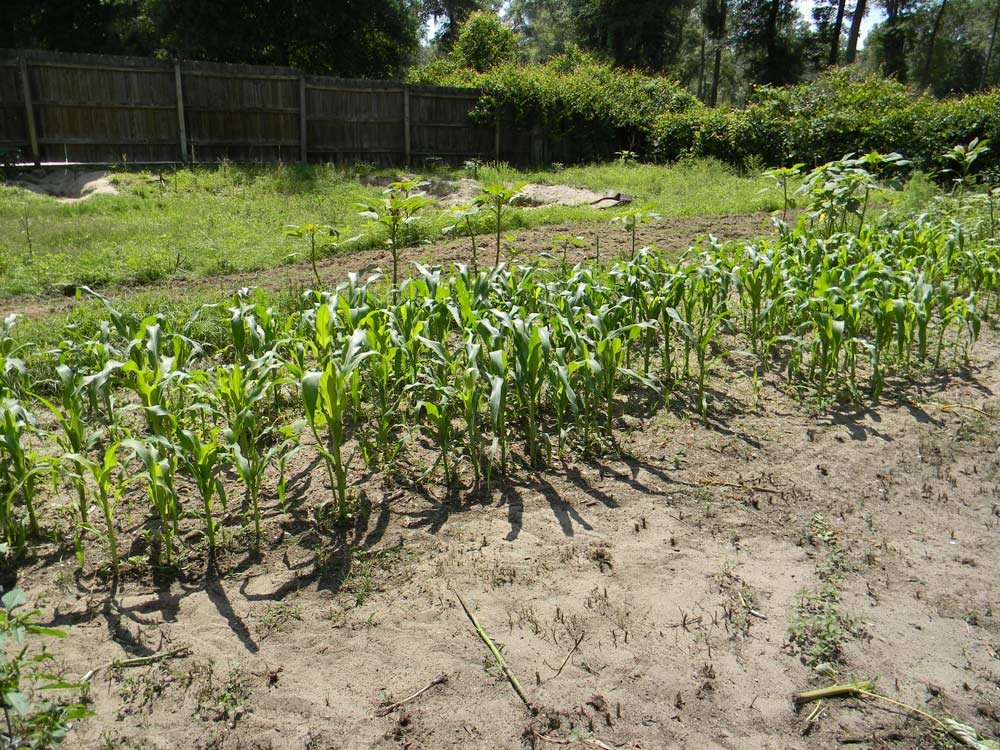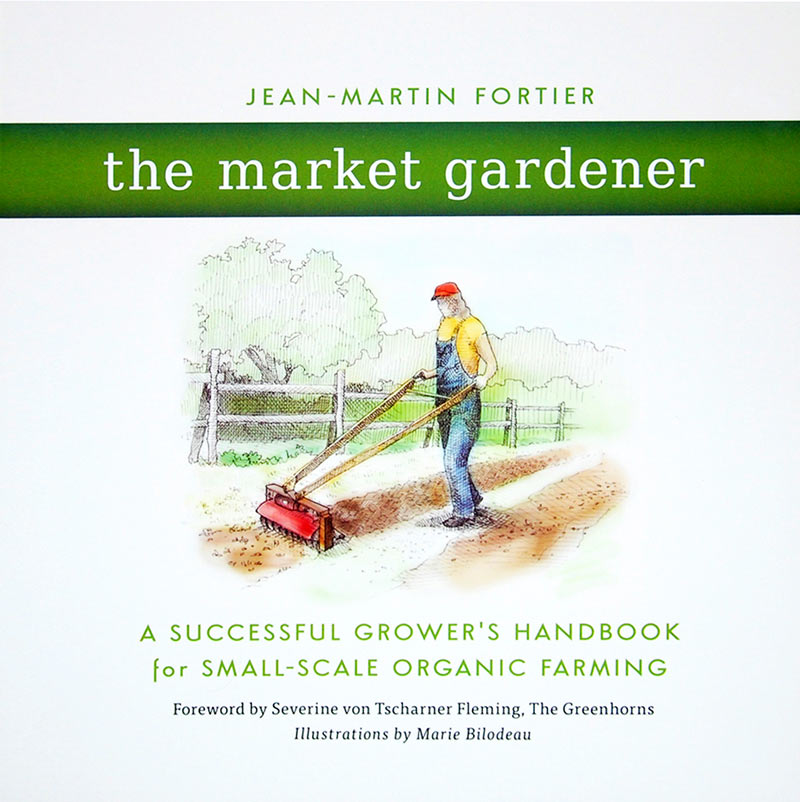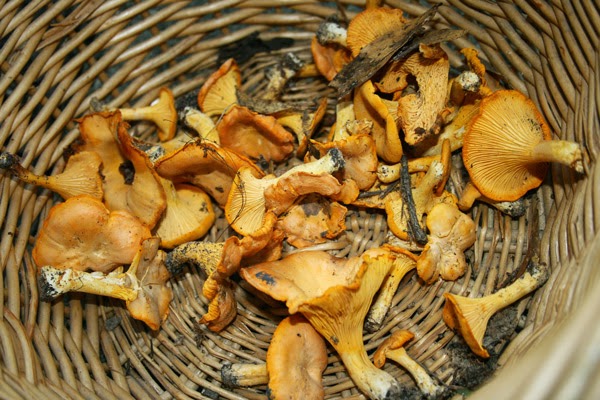
I received this email last week asking for some small farm advice:
Hi David,
First of all – congratulations on raising a large family! I wish more homesteaders would do the same. Now let’s jump into resources.
Small Farm Resources
I usually start by learning from mentors – and many of my favorite mentors are books. My favorite gardening books are listed here on a dedicated page.
Out of those, for a small farming situation, I recommend purchasing The Market Gardener along with Gaia’s Garden.

Quite useful
I’ve also heard good things about The Resilient Farm and Homestead. I own a copy but have it packed somewhere at the moment and haven’t been able to read it yet, alas. The rest of the books on my list will also help give you ideas, but some are definitely more applicable than others.
For websites, my favorite farming-related sites are The Deliberate Agrarian, Permaculture Apprentice and Pa Mac’s YouTube channel “The Farmhand’s Companion.”
You’ll also find some good inspiration from Marjory Wildcraft’s site Grow Your Own Groceries… and my friends at the Mother Earth News website share some good information. Permies.com is also a great rabbit hole… and if you really want to see some amazing projects, check out Skillcult.com.
Locally, be sure to visit the county agricultural extension and pick up all the data and handouts they have available. Ask what local farmers and gardeners are growing. Also check Meetup.com for gardening and permaculture Meetup groups. Every time you see someone with a nice farm or garden, try to stop and meet them. Leave a note on their gate if they’re not home!
Property Advice
Six acres is a lot of space to tend. Grazing animals really help keep pastures under control, though, so that’s good.
If you have wild areas and trees (since you already have some maples, it sounds like you may have more species too), don’t cut anything down or pull anything up until you know what it is. You could have wild nuts and fruits, not to mention trees that host edible mushrooms around their roots – some of which are quite valuable.

I gathered this basket of delicious chanterelles from around the base of a local oak tree – if that land had been cleared, these wouldn’t be there!
There could be valuable native medicinal plants or edible berries you’re not aware of yet. Even after a couple of years on my single acre I was still finding useful plants here and there. Don’t be too hasty to tear anything out!
Also, if you do take down a tree – compost it. All of it. Unless you chop the wood up for your fireplace, that is.
I still regret burning multiple oak trees six years ago when we bought our old homestead. I wanted them GONE RIGHT AWAY; instead, I should have made a pile of the limbs and trunks to feed the soil, edge garden beds and harbor fungi.
Finding Your Focus
Before you jump in to a bunch of projects and burn yourself out, it’s important to figure out what you want to do. Ask questions like:
- Is this going to be a profitable farm or just a hobby?
- Will my children be able to make money off this farm?
- Will I be willing to work like crazy outside?
- Are we really good with animals? All animals?
- Can I keep a large garden fed and tended?
- Am I hoping to feed my family from the farm?
My own farming and homesteading is primarily focused on research, not making money or producing crops for market. I know that a lot of what I try will fail. We raised goats for a while, then decided that wasn’t for us. We tried different breeds of chickens, plus ducks and guinea fowl. We raised meat birds and learned to butcher them, then stopped. One year we tested dent and flint corns in multiple different plots. Another year we spent creating beds of sugar cane and looking for simple ways to make our own sugar. We planted trees in the food forest that were unsuited to the climate, just to see if they’d live.
If I were interested in making money rather than gathering knowledge for this site and for my books, I would go straight to gardening in double-dug beds and growing tried-and-true high value crops.
If I just wanted to feed my family, I’d concentrate on chickens, yams, sweet potatoes, cabbages, pumpkins and some highly nutritious easy-to-grow greens. I wouldn’t bother with fun experiments like trying to grow coffee or grafting nectarines onto wild plums.
Other Small Farm Advice
Tip 1: Plant Edible Trees
When I get a new homestead, the first thing I’m going to do is plant fruit and nut trees. They take the longest to get going but they’re some of the very best investments you can make. You’ll have fruit for decades or even generations. Don’t wait on trees!
Tip 2: Garden Well in a Small Space First
Once you master a smaller garden, it’s easy to make it bigger. Tilling up an acre to start with may just end in frustration. Remember: you need to feed, water and feed everything well. You need to be able to deal with bug infestations and keep the soil in good shape. Learn on a smaller plot, then grow!
Tip 3: Secure Water Supplies
Make sure you have water stored up in multiple ways. City water and a well would be great. A tank fed by the roof is good. So are ponds. A creek is awesome. Just know that without access to water, everything else will fail. Build your gardens and animal areas around water sources first.
Tip 4: Keep the Garden Close
It’s best if you can step right out of the back door into the garden. Bonus points if you have to walk through the garden to get to your car. You’ll see problems this way. Wilting, insects, yellow leaves – issues can be dealt with right away. A garden far away will often fail unless you’re very dedicated.
And Finally…
 Grow or Die: The Good Guide to Survival Gardening isn’t a rant on the end of the world or “an argument sort of book”. It’s a how-to manual on feeding yourself even if things get tough. You can use it as a crash-course in gardening, a way to get started in your backyard, or as a book or tried-and-tested ways to feed and tend your plants when everything around you is falling apart. It also covers the excellent man-powered tools we’ve tested on our own homestead.
Grow or Die: The Good Guide to Survival Gardening isn’t a rant on the end of the world or “an argument sort of book”. It’s a how-to manual on feeding yourself even if things get tough. You can use it as a crash-course in gardening, a way to get started in your backyard, or as a book or tried-and-tested ways to feed and tend your plants when everything around you is falling apart. It also covers the excellent man-powered tools we’ve tested on our own homestead.
If you liked Compost Everything: The Good Guide to Extreme Composting, you’ll like this book even more. It’s definitely applicable to a small farm.
Thanks for writing and may God bless your new venture!


20 comments
Four good tips. I’d also add the following:
1. For anything worm bins, check out http://www.redwormcomposting.com/getting-started/
2. For getting serious about gardening a) book – Mini Farming Self-Sufficiency on 1/4 Acre, or b) videos – https://www.youtube.com/user/urbanfarmercstone/videos
3. eattheweeds.com for wild edibles
4. geofflawton.com for permaculture
Cheers,
P.S. One thing I forgot to add to my first comment, is DON’T GO IN DEBT TO BUY LAND. If you do, you are farming for the bank, not your family. Wish I would have thought of this before I bought my land many years back.
AMEN TO THAT!
Resilient Farm and Homestead is a terrific book for planning the use of your land. Goes thru all the steps in how to figure out how to plan what you are doing. I took it out from the library and was able to glean enough info to take a lot of notes and apply it to my standard urban lot.
Mother Earth News website is awesome – lots of info. If you can, buy up some old, first 100 issues especially, but don’t pay much for them. I found as much info from ads and letters to the editor as from the articles.
Make sure you have a plan for storing your produce during the off season – freezing, canning, dehydrating? Maybe a greenhouse in the future?
Best of luck to you.
I just bought the Resilient Farm and Homestead book so I can review it here. Very glad you found it worthwhile.
Good fencing is a must for livestock. I am a terrible fence builder. So when I had goats, in Malibu CA. they would get loose. They do a great job eating the brush. Why I got them, Brush clearing. These animals spend their days pushing the fence line, when not grazing. You will also have to house them in the winter. I really like some of the car port, turned to barn designs out there. Great idea. I would keep the animals away from the house. Since many do gather flies. The rancher here, put the hen house near my house. The summers are now terrible here. A trick people do to keep the water troughs from freezing, is to put basket balls in the troughs. To keep the water from creating ice, on top. Personally I’ll suggest starting with small Livestock. Keep feed costs down. Goat milk? In very small numbers too. Breeds, that are good in your climate. Rabbits are the best for worm beds. I just lay the droppings, in the garden beds. On top of the soil. Easy to do. My free range earthworms, are very abundant. Like spaghetti in the soil. No joke. This really works. I never buy any fertilizer, all plants are very healthy. The soil is rich & amazing. Rabbit manure is the best. It’s a cold manure, that never burns any plants, or trees. Rabbits are a gardener’s best friend. Grow cover crops. Using nitrogen producing plants, like Wheat, Red Clover, Lupine, & peas. I like Peaceful Valley farm Supply, & Farm Tek; as go to places. Great products. Farm Tek has the better prices. Lots of great stuff , farm gear too. Including livestock products.
Crop failure happens. like snails. I love Opossums for this problem. They also eat mice too. Ducks also eat snails. Not to mention any hungry critters, that come along. Might have to screen in your garden spaces. You will need to create proper housing for your livestock. Big or small. They do need care. Also it takes much time to harvest, & process what you do grow. Which is all or nothing, at any given time. Unless making pickles or acid type canning. Tomatoes. You will need a “pressure canner” (Not to be confused with a pressure cooker. ) Freezing food,& storing in a cellar, is also good planning. I’d take a hard look at what grows well in the area. Start with local, easy to grow crops. Small garden plots to start with. Also take a real good look at your time schedule. How many hours in a day will be spent doing farm work? Smaller the better to start. Until you know your lands. The animals that you keep. Which do require hours, of care too. Family time, & work time. To prevent from spreading yourself way too thin. Like the rancher, on this farm. It’s Run – A -Muk ranch here quite often. The family goes from daybreak till midnight. ( I just rent a house here, on this 50 acre ranch. ) It’s quite the eye opener, on what it takes to do a farm. The illusions of grandeur, can turn to a reality check real fast! Good luck & start small, with your projects. Till you settle in & learn what works? I have had much crop failure here. Learned what grows, & what fails as a result. We also have a major drought in California. Many trees are dying. Lakes gone dry. Endless summer too. I have wasted a whole lot on cash, on crop failure.
Thanks for all the advice, David. I have that same feeling you do about wishing like-minded folk would reproduce themselves more. But, God could raise up children of Jacob from the rocks if He wanted to…
I’m going to have lots of fun digging through all these info sources, as will my wife.
I’ve already had a tagalong day with a local organic dairy farmer. His operation is much larger than even our wildest dreams. ( I’m expecting to keep my day job until societal collapse renders it obsolete, which may or may not happen in my lifetime.) I loved it, and got some good hands on experience with moving pastured poultry and of course, milking. It made everything seem very feasible that we’re hoping to do.
It is reassuring to hear many of our ideas echoed in your advice and to get some fresh takes on things as well.
On a side note. If you wish for Mushrooms? keep in mind livestock feed contains anti-fungal, & are 90% GMOs.
Go organic.!
Thomas, one more thing. Growing annual vegetables is super hard on the body and resources. I’ve switched over to primarily concentrate on things that grow wild or perennials. For example, I have blackberries and raspberries that grow on my property. For years I didn’t even know what they were, but now that I do, I’ve been allowing them to grow, and I transplant the smaller plants that grow where I don’t want them to grow to areas that I do want them to grow. What once was only one patch of each is now six. This is free food each year with minimal effort. Black walnuts are a gold mine if you have these trees. I’m currently doing tests on some walnuts that I’ve processed. 80% of the walnuts I processed (wet and dry method) were good after the 2nd year of storage inside my house. I’ll be testing out how many last through this third year. Walnuts are free food too, and most people don’t want them, so I get them for free. Trees like Mulberry produce free food too, and this year I am testing to see how well growing them from cuttings do. I plan to plant 20 Mulberry cuttings along a fence line I have and will let you know how it works.
So basically I have buckets of black walnuts to enjoy whenever I want them. It’s a free protein source for my family and my chickens. I have free fruit that I make fruit leather out of and freeze for later use. I’m taking advantage of free food sources.
Great advice Shane. I wish to grow trees on my high desert lands. Mulberry does well out there. I want to make cuttings from my tree here. Olives, pomegranate, figs,- desert trees. That produce food. Is the plan. Maybe a cacti crop like Nopali. I have trees in containers for now. Working on my fence line. To start with. I own the land, for many years. . Just need to make a plan for it. Critters like to eat lots of stuff out there. I plan to post some owl boxes, to keep them in check.
@RH, yeah vermin are another reason to get away from annual vegetables. Pain in the butt. Having five cats has helped me with moles and rabbits. The BB gun helps with ground hogs. Using poly strips around my raised beds has stopped the deer. Good luck.
Deer resistant plant borders? Have you tried them?
@RH, haven’t heard of them, but I just put wooden stakes around my raised bed boxes and cut strips of poly (or contractor bags) into strips about 1.5 feet in height and staple them to the wooden stakes around my boxes. Since I’ve done this several years ago, the deer don’t step on or eat my plants inside the boxes. It’s as if they are scared to get trapped inside the boxes. I actually sent David a picture of one of my gardens with this setup, so hopefully he can post that pic one day on a post on deer.
Not to much to add, but seconding the plant the fruit and nut trees first thing because you have to wait for them to produce. For gardens, you can check and see if there is a seed bank in your area that will have varieties most suitable for your area. You can also have fun just trying stuff from year to year to see what does best. You can also learn about seed saving and picking out the best producing plants to keep seed from.
We have 12 acres (8 leased out) and three kids under 5, so my advice is be careful not to bite of more than you can chew (though you have a lot of potential help, it’s important to keep it fun and not a chore). Also, kids tend to eat their veg better if they had a hand in growing it. :)
I recently read Gia’s Garden and thought it a wonderful book too. Even though some of the advice climate wise, doesn’t really apply to me, because I live in Australia – it still had enough creative ideas to invent your own solutions. I specifically enjoyed the idea of connecting everything up, so there is less work for the gardener (ie: guilds). Plants will always nurse other plants, when you put the right combinations together. As someone who loathes weeding, I like the idea of planting everything up, so there’s no room for them to get in.
My experience on 5 acres for nine years are: Access road #1: make sure where water drains off your access road, to direct it to a swale and store that water on your land. Put fruit trees or a hedgerow, on that berm too. Plant survivors. This will prevent soil erosion, and reduce the need for road maintenance. It will also feed you. Plus you can access your road in all weather, if you responsibly manage the water flows and erosion.
Water storage #2: As what David said, nothing happens without water. Look for strategies to store it in your soil. That is the most cost effective strategy, and stores the most water. If you do have a well, storing water on your land, will help keep it full. You will do well to attach a water tank to every roof space too, including animal shelter. Use it as their water supply, and position tanks to use gravity instead of paying to pump with electricity.
Waste management #3: Use everything on your property as a source of fertility, whether it comes from you land, livestock or your family. Don’t chuck any of your waste products into landfill, then bemoan the price of compost and mulch, when you need it. We treat all our soil as a compost pile. Our entire 5 acres is a worm farm and insect retreat. Which feeds the birds that control the pest. We also turn the tall grass we don’t get to mowing in particular areas, into mulch, come autumn. The seasons do the hard work growing the grass, setting the seeds and then killing it off, by which time, we come and collect it to lay it where it will do the most good. Namely around plants we want to flourish
I didn’t mention anything about plants or food crops, other than under road access. Because without getting #1, 2 and 3 in order, you won’t be managing anything for long. That’s a really sad reality for everyone. Because gone are the days we can arrive at a parcel of land, and have it realise our dreams. We often have to serve that land, first, before it can give us anything in return.
My acknowledgement of plants would be this though, Propagation area #4: because you’ll save yourself an infinite amount of money, propagating from plants which successfully grow on your land, than having to buy them in retail. You may also start a small venture, supplying your region with durable plants too. They require a dedicated space though, if you’ll be growing to fill six acres. One tree I recently had success with (a carob) I learned is now $50, when I bought it 5 years ago, for just over $30. So I’m saving around $15-20 in the time it took to fruit, but if I can multiply that tree through propagation, I’m saving myself hundreds. So think of your food crops, as longer term investments.
Likewise, think of your land as a longer term investment, and it will pay off. :)
This is some seriously good thinking – thanks for the in-depth comment. You’re right on 1/2/3!
Have to ad… Check out Keeping a family cow…
Familycow.proboards.com I think. The book is must have for dairy animals and the community is Great! Even for non cow folks.
Whereabouts in Illinois? Makes a difference. I am in far northern IL, and have yet to plant anything. Southern IL they planted a month ago or more. A few things common there don’t work well here, like sweet potatoes and peanuts, due to the shorter season.
A food forest in IL is very easy, and a lot of stuff will just appear by itself, or with very little encouragement if you leave an area untouched for a year or two. I got mulberries, black and raspberries, walnuts and hickories naturally, and added strawberries which quickly spread out everywhere. Peaches and apples grow well, and will come up from scattered seeds.
I would say plant in tiers. Everybody recommends fruit and nut trees but few think of that coupled with bushes. I tend to think of food in paradigms of Fruit/nut trees, bushes, perinneals, and annuals in those four categories. Don’t sell out in any one of them unless your an expert at it. Become an expert in at least one thing if not two but don’t sell out on it. EX look at all the huge apple orchards and that is all they have. Why not plant 10 pecans where your horse cattle graze, chickens around them, then move to another pen when pecans drop. Blueberries, currants, goosberris, and blackberries where your at. I would get two good varieties of corn, one for dent and grits/scratch for chickens the other for fresh eating and plant on opposite sides of your property. Throw in a couple of bee hives when you generate enough capital. Then I would rotate vegtables in 1/4- 1/2 acre parcels “if I had 6 acres” like my grandfather did. Cover crop for three/four years that way your planing on soil only once very 4-5 years. You wouldn’t believe the yields, quality, etc. vs mass planing and systemic ferilizer. Move a mobile chicken coop after tilling under cover crop 6-12 months before your next 1/4-1/2 acre planting. I find 1/4 acre to 1/2 are far easier to manage or pick by hand, don’t stand out much, are better for fresh market picking, and are easier for pest management. Hope some of the dieas help.
[…] Brad shares some suggestions on my “Small Farm Advice” post: […]
Comments are closed.